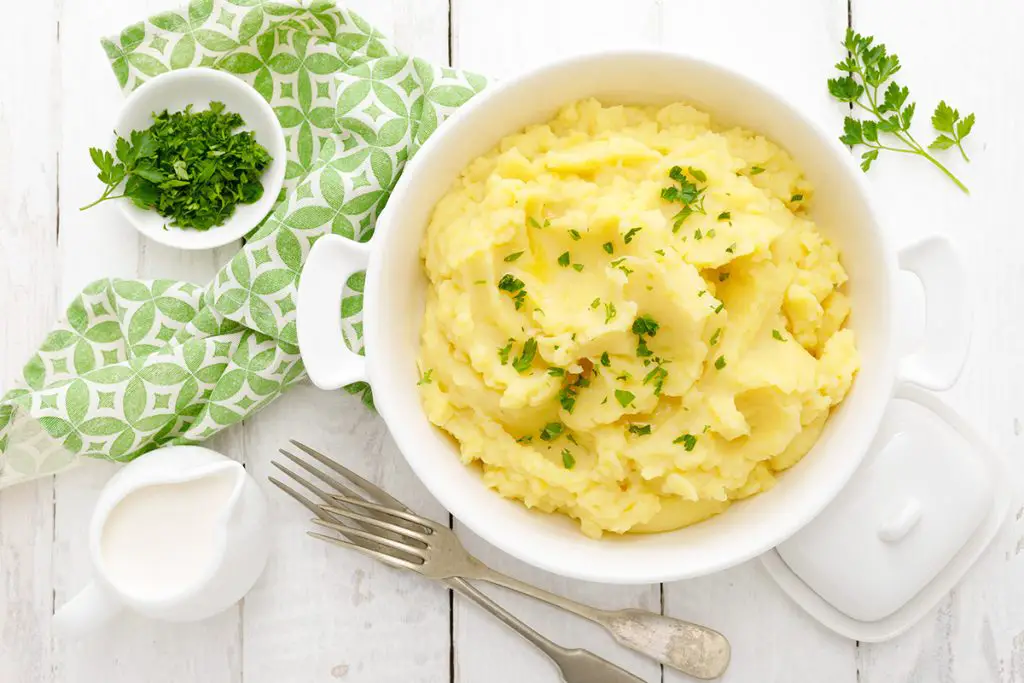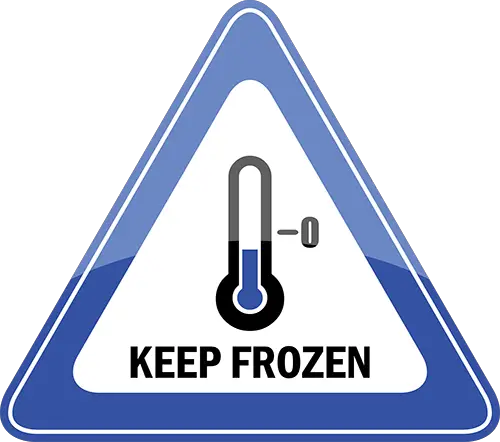Freezing Instant Mashed Potatoes Fast & Easy (Quick Guide)
Potatoes make up a significant part of the diets of people all around the world, and instant mashed potatoes are a popular potato variation. Freezing instant mashed potatoes allows you to plan ahead, whether for a large gathering or a humble mid-week dinner.
You can freeze instant mashed potatoes. When handled properly, instant mashed potatoes can maintain their taste and texture for several months. Although it’s technically safe to freeze mashed potatoes indefinitely, the taste and texture may change after a few months.
In this article, I’ll discuss the best ways to freeze instant mashed potatoes (or any other mashed potatoes for that matter). I’ll also share how to properly thaw and reheat frozen instant mashed potatoes to get the best flavor and texture possible.
How To Freeze Instant Mashed Potatoes
You can freeze instant mashed potatoes in four easy steps:
- Line a baking sheet with parchment paper. (Measure your baking sheet ahead of time to ensure that it fits in your freezer).
- Scoop your portions of potatoes onto the baking sheet.
- Place the baking sheet in your freezer for several hours until the potatoes freeze hard.
- Remove the sheet from the freezer, and transfer the hardened mashed potatoes into smaller containers. Sealable plastic bags work well for this, but any air-tight container will do the trick.

Five important things to keep in mind when freezing mashed potatoes are temperature, timing, serving size, fat, and air. These can affect the quality and the safety of your food.
- Temperature: It’s essential for mashed potatoes (instant or otherwise) to be at room temperature before putting them in the freezer. Not only does this prevent the potatoes from becoming too icy, it also prevents the freezer temperature from going up when you first put them in.
- Timing: Potatoes should be frozen as quickly as possible after preparing them. Health safety guidelines say the safest practice is to freeze food within two hours of sitting at room temperature. If the potatoes were outside on a hot summer day (over 90°F/32.2°C), that time drops to one hour. It’s important to follow these guidelines to help reduce bacteria growth and keep your instant mashed potatoes safe to eat.
- Serving size: For the fastest freezing and thawing, freeze mashed potatoes in the smallest serving sizes possible. According to the Livestrong Foundation, the average serving size for mashed potatoes is one cup. Consider using silicone ice cube trays or other smaller containers for portioning.
- Fat:Adding fat to your instant mashed potatoes before freezing helps them retain a soft texture. Add a little extra milk, butter, or your preferred fat to the potatoes before freezing them.
- Air: It’s important to keep air out of your potatoes. Using an air-tight container, you can release air with a vacuum seal or by closing the container most of the way and pushing the rest of the air out with your hand.
How To Thaw Instant Mashed Potatoes
According to the FDA, you should never thaw food at room temperature. If you want to thaw your potatoes before reheating them, these are the three safe ways to thaw food:
- Refrigerator – Put your frozen instant potatoes in the fridge overnight to let them thaw slowly.
- Microwave – You can thaw you mashed potatoes using the defrost setting on the microwave.
- Cold water bath – Set the container of frozen mashed potatoes in another container of cold water (if you thaw your potatoes in cold water, you must reheat them immediately afterward).
Once you’ve thawed your instant mashed taters, it’s time to reheat them.

How To Reheat Instant Mashed Potatoes
You can reheat your instant mashed potatoes on the stove, in the microwave, in the oven, or in a double boiler.
- To reheat instant mashed potatoes on the stove: Place them in a pan on the stovetop and let them slowly heat through on low heat. Occasionally stirring the potatoes will help them to heat faster and more evenly.
- To reheat frozen instant mashed potatoes in the microwave: Cover them and let them heat for five minutes at fifty percent power. If you have already thawed your potatoes, they may take less time, so make sure to check them after two or three minutes.
- To reheat instant mashed potatoes in the oven: preheat your oven to 350°F (177°C). Cover the potatoes in an oven-safe bowl, and bake for 20-30 minutes.
- To reheat instant mashed potatoes on a double boiler: Place a bowl of mashed potatoes inside a pot of simmering water. Your water should have a few small bubbles but not a rolling boil.
Regardless of the way you reheat your mashed potatoes, you may find them a little drier than they were before freezing. To make up for the moisture lost when frozen, you can add a little milk or butter. This works best if you use the same liquid you used to make them initially.
On the other hand, if your potatoes seem a little too runny after reheating, try adding a bit of cream cheese or sour cream to thicken them up.
Final Thoughts on Freezing Instant Mashed Potatoes
You can freeze instant mashed potatoes for several months. When you’re ready to enjoy them again, these tips will allow you to thaw and reheat them safely and effectively.




